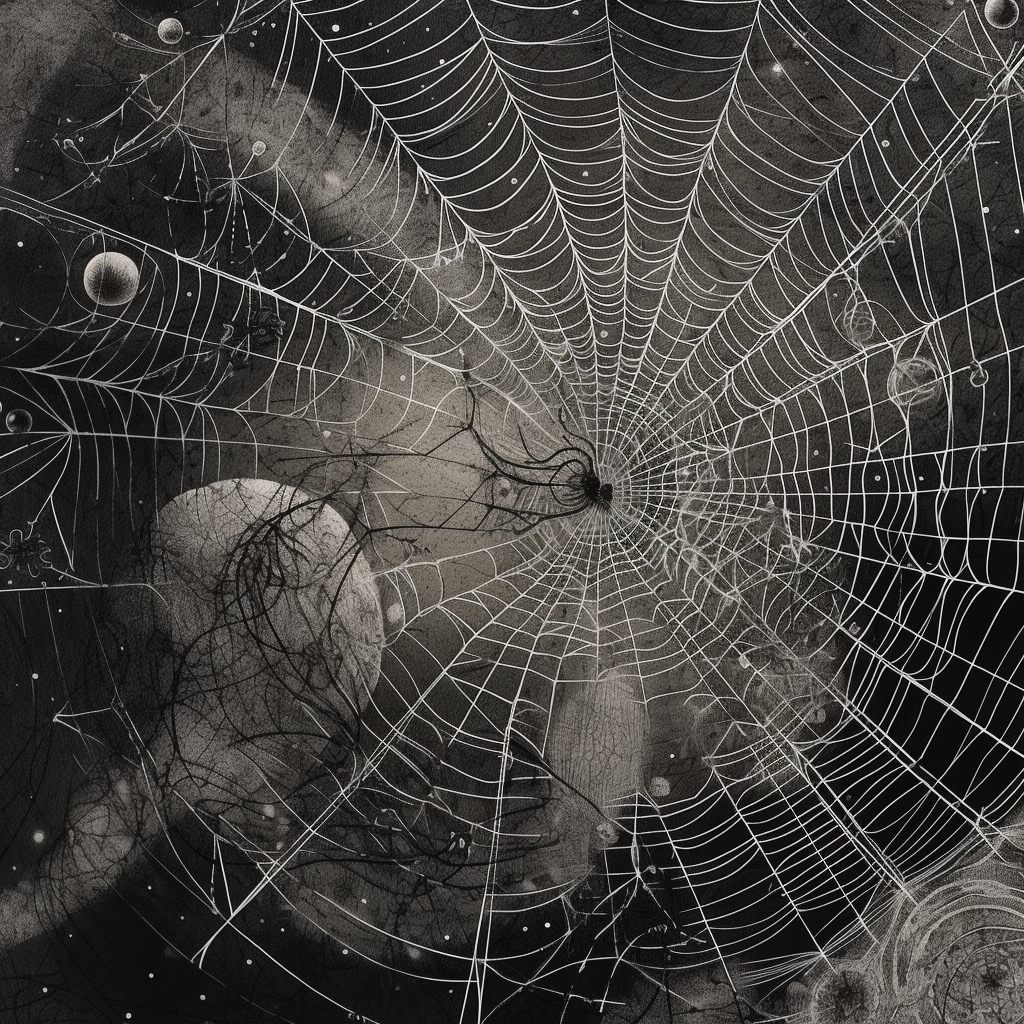I spent some time down the rabbit hole today, and this is what I brought back. Actually there are two more things I brought back, but I’m waiting for me buddy Jeremy to get back to me before I set them lose in the wild.
Here’s what I learned about semiotics…
If there were an invisible painter who could splash the world with a rich palette of meaning, that painter would be Semiotics. Imagine our reality as a colossal, intricate canvas, each corner filled with signs, symbols, and signals. Semiotics is the study of this visual, auditory, even tactile language.
To begin, let’s compare semiotics to a spice cabinet, where every herb and spice represents a different sign. When a chef – or in our case, a culture or society – combines these spices in various ways, they create a uniquely flavored dish, just as symbols create distinctive meanings in different contexts.
A symbol, or sign, according to our guidebook written by the father of semiotics, Ferdinand de Saussure, is a two-sided coin. One side is the signifier – the physical form, the word, the sound, the image. It’s the bark of a dog, the word “apple,” or the color red on a stop sign. The flip side of this coin is the signified – the concept or meaning that’s associated with the signifier. It’s the mental image or understanding we have when we hear a dog bark, when we read the word “apple,” or when we see a stop sign.
Imagine you have a coin in your hand. You can feel its weight, see its shine, and maybe even smell the metallic tang. These physical attributes represent the signifier. But this coin isn’t just a lump of metal. It might be a pound coin, which you associate with laundry day or parking meters. That’s the signified.
So, you see, semiotics isn’t just a spice cabinet or a coin, it’s the dance between the two sides of the coin, or the complex flavors produced by combining different spices. It’s a translation of sensory input into shared meaning.
Semiotics, then, is like the ocean’s current, invisible yet potent, carrying messages from one place to another. A piece of clothing, a logo, an emoji, a traffic signal, a religious icon, a political slogan – they all convey a sea of meanings that semiotics helps us navigate.
An example of this can be found on any city street. Take a billboard displaying an advertisement. Let’s say there’s a picture of a rugged individual in the wild, wearing a stylish watch. The signifiers here are the picture and the watch, but what they signify could be adventure, independence, and a certain upscale lifestyle. The brand is not just selling a watch; it’s selling an identity, a dream. This is semiotics at work, sculpting our world of signs into specific meanings.
Similarly, semiotics is a lot like being an archaeologist. Just as an archaeologist brushes away the dust to reveal the artifacts and understand the culture they represent, semiotics helps us brush away the surface impressions to comprehend the deep, often subconscious meanings our society communicates.
But the thing is, much like different spices taste different to everyone or the weight of a coin might feel different in another’s hand, meanings aren’t always the same for everyone. Our experiences, beliefs, and cultural backgrounds can influence how we perceive symbols. In this way, semiotics is not just an ocean’s current or an archaeologist’s tool, it’s a mirror reflecting our subjective interpretations.
This is why semiotics is so crucial in fields like marketing, branding, film studies, linguistics, and even anthropology. It is like the key that unlocks the hidden messages and meanings embedded in cultural artifacts, media, and communication. It’s the secret decoder ring we never knew we always had.

To summarize, semiotics is the study of everything we take for granted. It’s the language we’re speaking, even when we’re silent. As individuals in society, we’re like spiders spinning intricate webs of meaning through our daily interactions. These webs–glistening with dewdrops of signs–are the raw material of semiotics.
To some, semiotics might appear to be an academic, abstract concept. But to those with a keen eye for the invisible painter’s work, it’s a constant dialogue between the world and ourselves. It’s as common as the coin in your pocket, as diverse as the spices in your cabinet, as ubiquitous as the ocean’s current.
So, the next time you’re stopped at a traffic light, watching a movie, reading a book, or even glancing at a billboard, remember you’re engaging in semiotics. You’re a part of the grand dance of signs, a player in the infinite game of symbolic exchange. Semiotics is not just a study–it’s a way of seeing the world. And once you’ve seen through the semiotic lens, the world is never quite the same again.